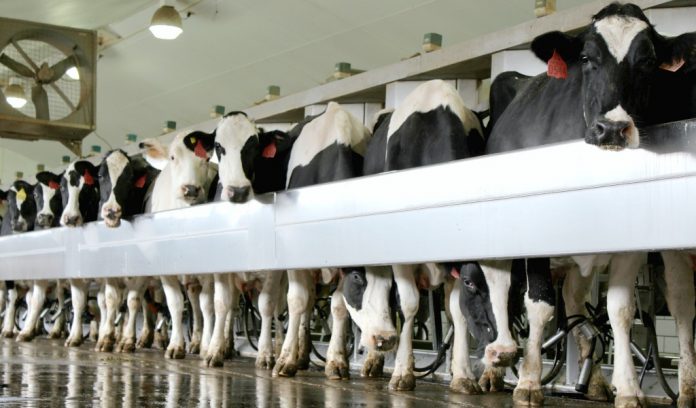The dairy economy is extremely difficult today and there is no definitive answer as to when it might improve.
I have talked and sat around the kitchen table with a number of families who are concerned about their situation and future.
Times are not easy and the decisions that need to be made are difficult and filled with emotion. While it will not solve the problem, understand you are not alone and most of your peers are facing the same difficult decisions.
There are a number of options to consider when analyzing farm financial records and looking at ways to trim expenses. There is no “recipe'” for solving each situation because each farm is unique.
Here are some things I’ve talked with farm families about that you may find useful.
Talk
Communication — is always important and becomes more critical when finances are tight.
Items such as new equipment purchases verse repairing existing equipment, knowing your financial situation, developing a plan to stay or get current with your expenses, are examples of some of the items to communicate.
Open communication must occur with:
- Business partners and spouses
- Lenders
- Veterinarian, nutritionist, suppliers, etc.
Present situation
Start by knowing where you are today. Regardless of the system you use to track farm income and expenses, analyze the numbers you have.
Do you know your cost of production? Has your farm historically been profitable or have you struggled for a long period of time to be profitable? What’s holding you back from achieving consistent profitability?
Have you analyzed the profitability of individual enterprises that make up your farm?
Options
Every farm is different and each situation is unique when it comes to evaluating options.
Factors such as the number of cows, number of family and employees, level of milk production, debt, number and type of crop acres, among others, make it impossible to give a perfect solution that will be appropriate for each farm.
Based on my discussions with families, here are thoughts on possible options.
- Evaluate areas for potential cost savings.
- Talk to your nutritionist. Ask questions about ration ingredients, their purpose and cost.
Can you remove something from a ration without negatively impacting animal health or milk production? Can you adjust the dry cow diet or management to reduce expenses without a negative result?
- Can changes be made in your cropping program? Are you soil testing? If so, are you following the recommendations?
Lime is sometimes the first crop input to be reduced, but I caution you in doing so.
A pH imbalance can result in poor nutrient uptake and reduced yields. OSU Extension has conducted a number of on-farm research studies you may find useful when looking to reduce costs.
Consult your OSU Extension Agriculture and Natural Resources Educator for more information.
- Talk to your lender — Explain your situation, goals, and ask about options. Can you stretch any of your debt over a longer period? What is your plan to pay the debt? How will it cash flow?
- Sell scrap and/or unused equipment — This is a one-time cash infusion that will not help over the long-term.
- Sell timber/coal/other minerals — Selling timber or other resources provide cash for the immediate term, but does little to help in the long-term. In the case of timber, depending upon a number of factors, it may 20 or more years before another harvest can occur.
- Sell some animals — Again, this gives some cash, but you can’t keep selling the cows that are producing milk. However, you should eliminate from the herd those cows that are poor producers, have health issues, are difficult breeders, etc.
- Sell land — Is there some acreage that you don’t need, is poor quality or doesn’t yield well?
Depending upon your level of debt, this may be a viable option worth consideration. Can you retain enough acres to continue with a different venture?
- Off-farm employment — You or your spouse may need to explore potential off-farm employment. The extra income can help lessen the burden on the farm and reduce stress.
- Sell the herd — It isn’t what you want to do, but may be your only option. Like the other options, this is filled with deep emotion. Evaluate this option from a business perspective.
Decision implications
This list of options is not exhaustive, but is meant to serve as a starting point for discussion.
Some options may not be viable, while others may be worth giving consideration. Regardless of the decision you make, keep in mind there may be tax or legal implications for which you must prepare.
Make certain you contact professionals in these areas who can answer questions and provide direction.
Seek advice
Don’t be afraid to ask for help. There are plenty of people, including family, clergy, friends, OSU Extension professionals, licensed therapists, and counselors, willing to listen, provide support, and assist you.
The decisions to be made are often filled with much emotion. While understandable, allowing emotions to drive your decision making can result in poor outcomes.
Seek the advice of an outside party to help you and your family evaluate options and arrive at a decision that best suits everyone.
I’ve told every family, I would rather see them in a position where they are able to make the decisions, rather than be told what is going to happen.












